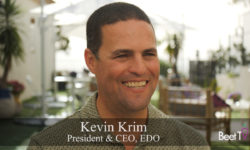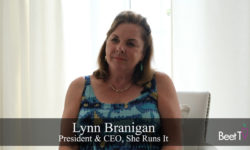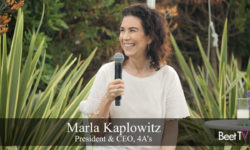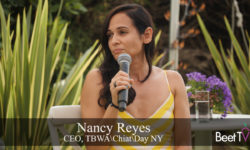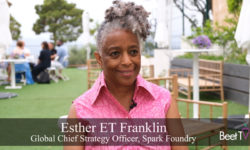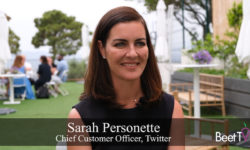CANNES — After a year in which the consensus around traditional media measurement splintered, Nielsen came to Cannes Lions acknowledging the rivals nipping at its heels – and stating its case for its own vision of media measurement.
Over the last year, Nielsen has been working to gain re-accreditation with the Media Rating Council and has been overhauling its measurement offerings, while some TV networks have begun adopting new-style digital measurement systems.
In this video interview with Tameka Kee for Beet.TV, Ameneh Atai GM, Digital & Advanced TV & Commercial, Nielsen, explained why she is relaxed about competition, but committed to bringing Nielsen’s new solutions to market.
Don’t disrupt the industry
“Competition in measurement isn’t new and competition makes us all better and stronger – we strongly believe in it,” Atai says.
“But (the) fundamentals of currency stay the same. We define those fundamentals as:
- “Comparability.
- “Coverage.
- “Consistency.”
Atai says: “Our solution is currency-grade. We’re the only player that is seeking MRC accreditation and third-party audit for all of our measurement.
“It’s not just the PowerPoint deliverable. We need to be able to actually transact on the data produced by this.
“We have to be innovative, but not disruptive to the way that the industry transacts.”
On each of her three Cs, Atai outlined Nielsen’s actions.
Coverage
“Our coverage is unmatched in the industry,” she says. “We measure linear television, addressable, connected TV, smartphone, tablets, social media, walled gardens.
“Within the digital ecosystem, we measure over 80% of all media.
“We measure people – that’s very important because… if you don’t validate that with actual consumer viewing behaviour, you can have inflated numbers and not represent all people.”
Consistency
Atai says the deprecation of digital identifiers like cookies shows how a world in a state of flux can be challenging for media players that need to reliably measure.
“I think we are all very familiar with how fragile the digital ecosystem can be,” Atai says.
“Our measurement can survive beyond those fragile digital identifiers and kind of stand the test of time as new players and advancements are introduced in the marketplace.”
Comparability
Atai says Nielsen’s offerings will be “on par with digital” “by the end of the year”.
“We’re bringing how television is measured on par with digital,” she says. “We’re moving from average-commercial-minutes to exact commercial ratings.”
Back in late 2020, the company made an early announcement of its big, future-facing cross-media measurement system, Nielsen ONE.
It would bring deduplicated viewing measurement, digital viewing data, individual ad measurement and a merger of Nielsen’s units that measure linear and streaming TV.
Nielsen’s New Roadmap For Unifying Media Measurement Explained
“We actually unveiled Nielsen ONE to the industry because we didn’t want to build something in a silo and then bring it to the marketplace,” Atai says.
In June 2022, the company announced the second stage of the ONE alpha – namely, advanced audiences and outcomes measurement. According to its announcement:
“If an automotive advertiser launches an ad campaign for a new vehicle and the target audience is competitive brand purchasers, the advertiser will be able to see the reach and frequency of the campaign among those segments. Alongside that data, the advertiser can see how effective the campaign was at delivering outcomes.”
In this second phase, advanced audiences will initially integrate Polk automotive audience segments by S&P Global Mobility. Additional groups and audiences, including client first party segments, will follow.
You are watching ‘The Future of Media Measurement’, Beet.TV Leadership Summit at Cannes Lions 2022, presented by Nielsen.
For more videos from this series, please visit this page.
Beet.TV is an official partner of Cannes Lions.







